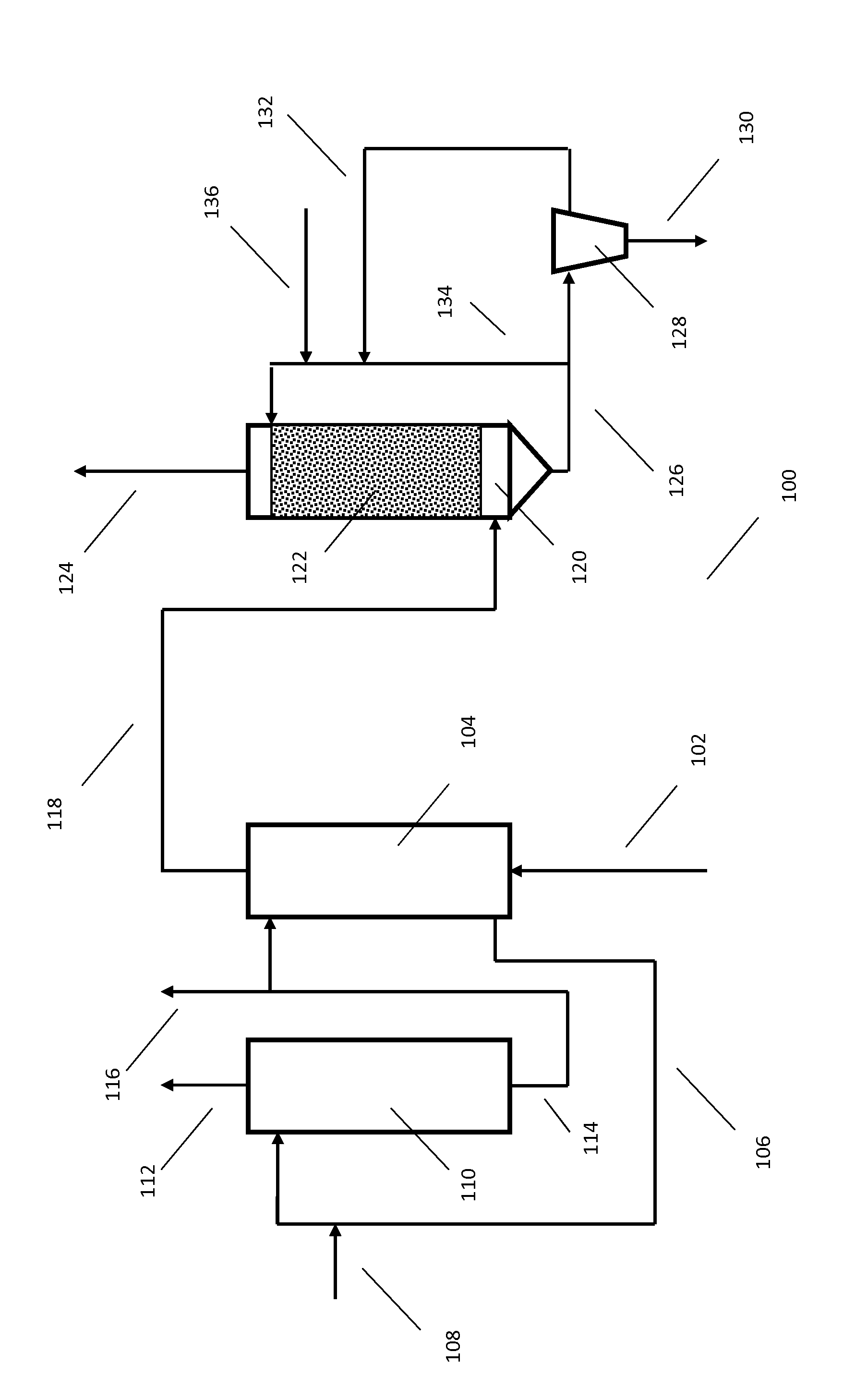Processes for selectively reducing the concentration of hydrogen cyanide in syngas
a technology of hydrogen cyanide and syngas, which is applied in the direction of hydrogen separation, biomass after-treatment, and separation processes using liquid contact, etc. it can solve the problems of negligible oxidation of carbon monoxide or hydrogen, limitation of hydrogen cyanide mass transfer, and facilitate control. , the effect of reducing the rate of oxidation of hydrogen cyanid
- Summary
- Abstract
- Description
- Claims
- Application Information
AI Technical Summary
Benefits of technology
Problems solved by technology
Method used
Image
Examples
examples
[0066]For purposes of illustration of the invention and not in limitation thereof the following examples based upon computer simulations are provided. All parts and percentages of solids are by mass and all parts and percentages of liquids and gases are by volume unless otherwise stated.
[0067]A permanganate oxidizer such as described in connection with the FIGURE is used to treat a syngas of the composition set forth in Table I and a syngas of the composition set forth in Table II below. The aqueous solution to the top of the permanganate oxidizer contains about 250 parts per million by mass of sodium permanganate. The permanganate oxidizer contains Beta Ring™ random packing having a nominal size of 2 inches from Koch-Glitsch, Wichita, Kans. The syngas is passed through the permanganate oxidizer to provide a residence time based on superficial velocity of about 2.7 seconds, and the aqueous solution is provided at a rate of about 0.3 liters per second per square meter of permanganate...
PUM
| Property | Measurement | Unit |
|---|---|---|
| temperature | aaaaa | aaaaa |
| temperature | aaaaa | aaaaa |
| pressure | aaaaa | aaaaa |
Abstract
Description
Claims
Application Information
 Login to View More
Login to View More - R&D
- Intellectual Property
- Life Sciences
- Materials
- Tech Scout
- Unparalleled Data Quality
- Higher Quality Content
- 60% Fewer Hallucinations
Browse by: Latest US Patents, China's latest patents, Technical Efficacy Thesaurus, Application Domain, Technology Topic, Popular Technical Reports.
© 2025 PatSnap. All rights reserved.Legal|Privacy policy|Modern Slavery Act Transparency Statement|Sitemap|About US| Contact US: help@patsnap.com


